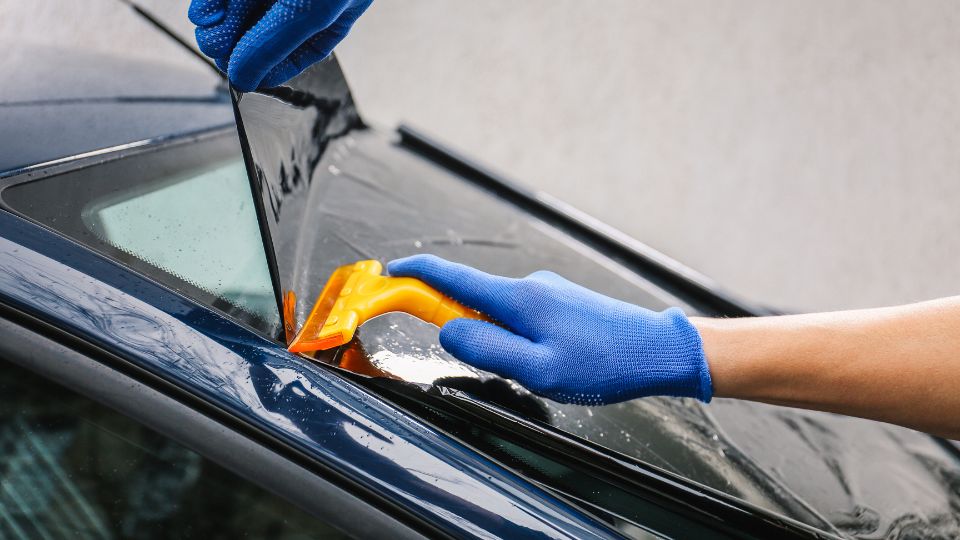Business
Maintaining and Caring for Auto Tinted Windows – JN Hub

Tinted windows are like a stylish pair of sunglasses for your car, adding privacy, reducing glare, and giving your vehicle a sleek appearance. But just like those sunglasses, your tinted windows need proper care to maintain their clarity and effectiveness.
In this post, we’ll go through essential tips and advice on how to clean, maintain, and prolong the lifespan of your tinted windows. We’ll also explore the best cleaning products and techniques to ensure your tinted windows continue to enhance your driving experience for years to come.
Why Proper Care Matters
Auto window tinting offer numerous benefits, from protecting your interior from harmful UV rays to keeping your vehicle cooler on hot days. But if they’re not properly maintained, their effectiveness can diminish, leaving you with less-than-optimal results. Imagine wearing scratched and dirty sunglasses – not a pleasant experience, right? The same applies to your tinted windows.
Cleaning Your Tinted Windows: Do’s and Don’ts
Cleaning your tinted windows is a straightforward task, but it’s important to follow some do’s and don’ts to prevent damage.
Do’s:
- Use Mild Cleaning Solutions: Stick to gentle, non-ammonia-based cleaning solutions. Ammonia and harsh chemicals can break down the tint’s adhesive and damage the film.
- Choose Soft Materials: Opt for microfiber cloths or soft sponges. Abrasive materials like paper towels or rough sponges can scratch the tint.
- Start from the Top: Begin cleaning from the top of the window and work your way down. This prevents dirty water from running over already cleaned areas.
- Rinse Thoroughly: After using a cleaning solution, rinse the window thoroughly with clean water to remove any residue.
Don’ts:
- Avoid Ammonia-Based Cleaners: Ammonia can cause your tint to bubble or become discolored. Check cleaning product labels for ammonia content.
- Say No to Sharp Objects: Don’t use sharp objects to remove debris. Scratches can compromise the tint and its effectiveness.
- Skip Abrasive Materials: As mentioned, abrasive materials like paper towels or harsh sponges can scratch the tint and ruin its appearance.
Effective Cleaning Techniques
Now that you know the do’s and don’ts, let’s walk through an effective cleaning technique for your tinted windows:
- Gather Your Supplies: Get a microfiber cloth, a gentle cleaning solution (preferably tint-safe), and a bucket of clean water.
- Rinse the Window: Use clean water to rinse the window, removing loose dirt and debris.
- Apply the Cleaning Solution: Spray the cleaning solution onto the microfiber cloth. Avoid spraying directly onto the window to prevent overspray onto the interior.
- Wipe Gently: Starting from the top, gently wipe the window using vertical motions. Avoid pressing too hard.
- Rinse Again: Rinse the cloth and use it to wipe the window with clean water, removing any cleaning solution residue.
- Dry with Care: Use a dry microfiber cloth to gently pat the window dry, avoiding rubbing motions that could scratch the tint.
Best Cleaning Products for Tinted Windows
Choosing the right cleaning products is crucial for maintaining your tinted windows’ integrity. Look for products that are ammonia-free and designed for use on tinted surfaces. Here are a few recommended options:
- Tint-Safe Glass Cleaners: These cleaners are specifically formulated to be gentle on tinted windows while effectively removing dirt and grime.
- Microfiber Cloths: Soft and lint-free, microfiber cloths are ideal for cleaning tinted windows without scratching the film.
- Rubbing Alcohol: If you encounter stubborn residues, a small amount of rubbing alcohol on a microfiber cloth can help, but use it sparingly.
Additional Tips for Longevity
Beyond cleaning, here are some additional tips to ensure your tinted windows stay in great shape:
- Avoid Window Stickers: Placing stickers directly on tinted windows can cause adhesive residue buildup and damage the tint when removed.
- Be Mindful of Sharp Objects: When loading or unloading items from your car, be cautious not to bump sharp objects against the windows.
- Regular Inspection: Periodically check your tinted windows for any signs of peeling, bubbling, or damage. Catching issues early can prevent further damage.
Conclusion
Your tinted windows are an investment in both style and function. With proper care, they can continue to enhance your driving experience and provide you with the benefits you initially sought.
By following the cleaning techniques, using appropriate products, and being mindful of potential risks, you’ll ensure your tinted windows remain clear, stylish, and effective for miles and miles. Remember, a little maintenance goes a long way in preserving the clarity and longevity of your tinted windows.
Why My Car’s Ac Is Blowing Warm Air
FAQs
Q1: How often should I clean my tinted windows?
A: Ideally, you should clean your tinted windows at least once a month to prevent the buildup of dirt, grime, and residue. However, if you frequently drive in dusty or urban areas, you might want to clean them more often. Regular cleaning helps maintain the effectiveness and appearance of your tinted windows.
Q2: Can I use regular household glass cleaners on tinted windows?
A: It’s best to avoid using regular household glass cleaners on tinted windows. Many of these cleaners contain ammonia, which can damage the tint’s adhesive and cause it to bubble or discolor. Instead, opt for tint-safe glass cleaners that are ammonia-free and specifically designed for use on tinted surfaces.
Q3: Is it possible to remove scratches from tinted windows?
A: Removing scratches from tinted windows can be challenging and might require professional assistance. It’s recommended to avoid using abrasive materials that could scratch the tint in the first place. If you do notice scratches, consult a tinting professional for advice on repair options. Prevention is key – use soft materials and gentle cleaning techniques to reduce the risk of scratches.




